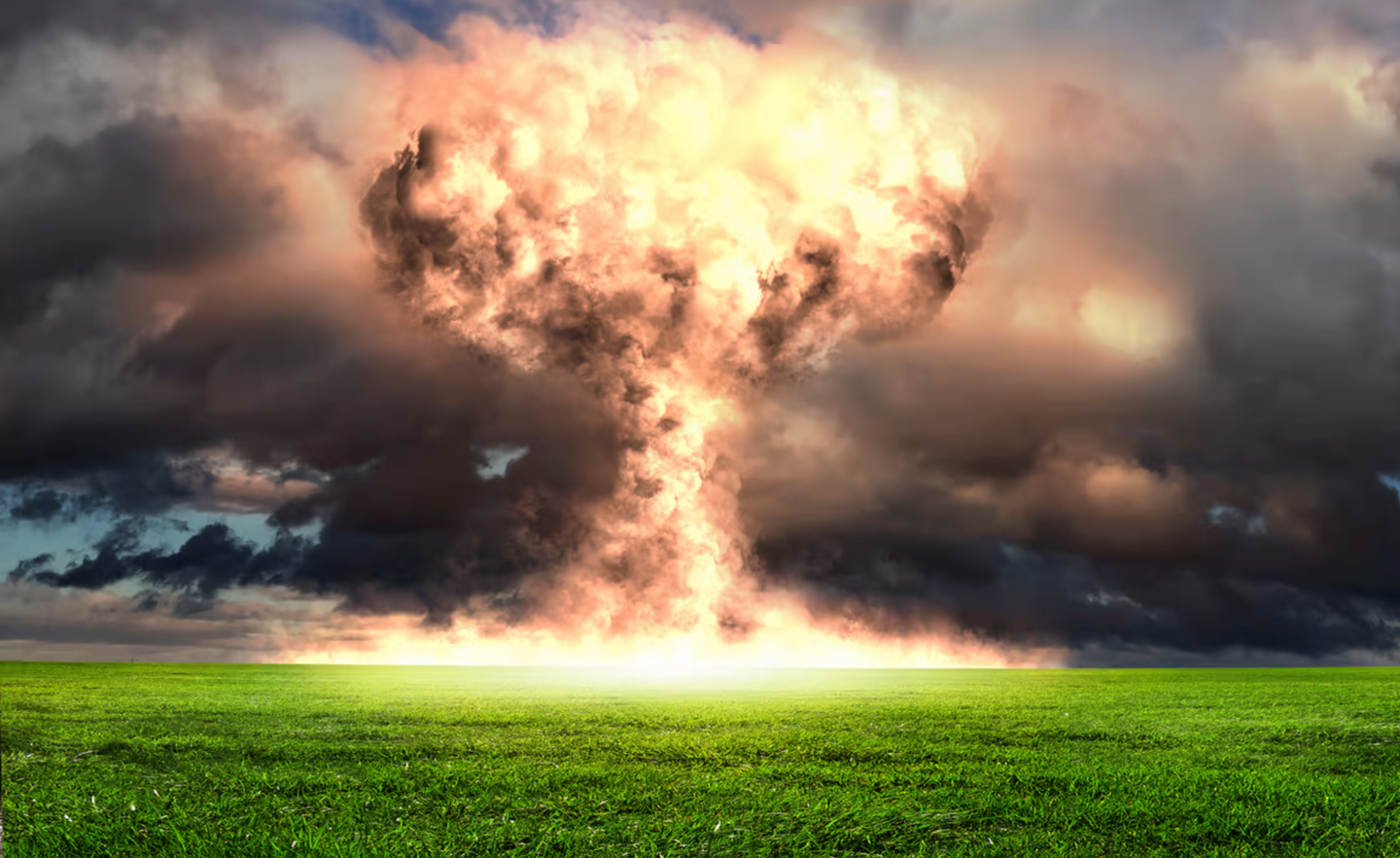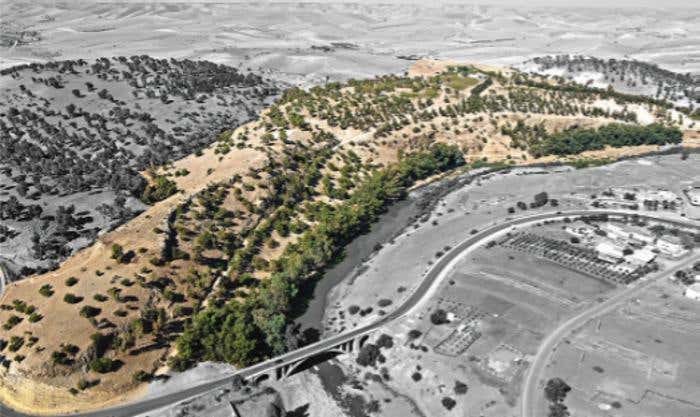Nuclear war would have a massive impact on global climate and food availability
A nuclear war would cause many immediate fatalities, but the resulting fires’ smoke would also trigger climate changes lasting up to 15 years

The resulting smoke, injected into the stratosphere, would cause global climate changes, a phenomenon often referred to as “nuclear winter.” (CREDIT: Creative Commons)
A nuclear war would cause many immediate fatalities, but the resulting fires' smoke would also trigger climate changes lasting up to 15 years, threatening global food production and human health. This is the conclusion of a study conducted by researchers at Rutgers University, the National Center for Atmospheric Research, and other institutions, published in the Journal of Geophysical Research—Atmospheres.
Historically, scientists have understood that nuclear weapons detonated over cities and industrial areas could ignite large-scale fires. The resulting smoke, injected into the stratosphere, would cause global climate changes, a phenomenon often referred to as "nuclear winter."
However, in this new study, researchers for the first time utilized a modern climate model, incorporating aerosols and nitric oxide emissions, to simulate the effects on ozone chemistry and surface ultraviolet light caused by sunlight absorption from the smoke of regional and global nuclear wars.
This could result in the loss of most of our protective ozone layer, taking a decade to recover and causing several years of extremely high ultraviolet light at the Earth's surface, further endangering human health and food supplies.
"Although we suspected that ozone would be destroyed after nuclear war and that would result in enhanced ultraviolet light at the Earth's surface, if there was too much smoke, it would block out the ultraviolet light," said Alan Robock, a Distinguished Professor in the Department of Environmental Sciences at Rutgers University-New Brunswick and one of the study's authors. "Now, for the first time, we have calculated how this would work and quantified how it would depend on the amount of smoke."
The study's findings revealed that for a regional nuclear war between India and Pakistan, which would generate five megatons of soot, the enhanced ultraviolet light would begin within a year. In contrast, a global war between the United States and Russia, producing 150 megatons of soot, would delay the onset of enhanced ultraviolet light to about eight years. Intermediate amounts of smoke would produce effects falling between these extremes.
In a global nuclear war scenario, heating in the stratosphere and other factors would cause a 15-year-long reduction in the ozone column, with a peak loss of 75 percent globally and 65 percent in the tropics. These figures surpass predictions from the 1980s, which accounted for large nitrogen oxide injections but did not consider the smoke's effects.
Related Stories
For a regional nuclear war, the global ozone column would be reduced by 25 percent, with recovery taking 12 years. This aligns with previous simulations but indicates a faster recovery due to a shorter soot lifetime in the new models.
"The bottom line is that nuclear war would be even worse than we thought, and must be avoided," Robock emphasized. "In other work, we have calculated how agriculture would change based on temperature, rain, and sunlight variations, but have not yet included the effects of ultraviolet light. Additionally, the increased ultraviolet light would harm animals, including humans, by increasing cancer and cataract rates."
What are more likely effects of nuclear war on the environment?
Nuclear war has devastating and far-reaching effects on the environment. Here's a detailed overview of the primary environmental impacts:
Immediate Effects
Blast and Thermal Radiation:
- Blast Waves: The immense energy released by nuclear explosions generates blast waves that cause massive destruction over vast areas, obliterating natural landscapes, forests, and urban areas.
- Thermal Radiation: Intense heat from the explosion can ignite fires over wide regions, leading to firestorms that consume vegetation and release large amounts of smoke and soot into the atmosphere.
Radioactive Fallout:
- Immediate Fallout: Nuclear detonations release a large amount of radioactive particles into the air, which then settle back to the ground, contaminating soil, water, and living organisms.
- Long-Term Contamination: Radioactive materials such as cesium-137 and strontium-90 can persist in the environment for decades, leading to long-term ecological damage and posing health risks to humans and wildlife.
Short-Term Effects
Climate and Weather:
- Nuclear Winter: The smoke and soot from widespread fires can block sunlight, leading to a significant drop in surface temperatures, known as "nuclear winter." This can disrupt global weather patterns, shorten growing seasons, and cause agricultural failures.
- Acid Rain: The release of nitrogen oxides from nuclear explosions can lead to the formation of acid rain, which can damage ecosystems, soil, and water bodies.
Biodiversity:
- Habitat Destruction: The immediate destruction of habitats from blast waves and fires can lead to the loss of plant and animal species.
- Radiation Effects: Exposure to radiation can cause genetic mutations, reproductive failures, and increased mortality in wildlife, leading to declines in biodiversity.
Long-Term Effects
Ecosystem Disruption:
- Soil Degradation: Radioactive fallout can lead to soil contamination, reducing its fertility and affecting plant growth.
- Water Contamination: Radioactive particles can enter water bodies, contaminating drinking water sources and harming aquatic life.
Human Health Impact:
- Radiation Sickness: Immediate exposure to high levels of radiation can cause acute radiation sickness in humans and animals.
- Cancer and Genetic Damage: Long-term exposure to lower levels of radiation can increase the risk of cancers and cause genetic damage that affects future generations.
Global Impact
Agricultural Impact:
- Crop Failures: The drop in temperatures and changes in precipitation patterns can lead to widespread crop failures, threatening food security globally.
- Famine: The disruption of agriculture can result in food shortages and famine, affecting millions of people worldwide.
Economic Impact:
- Economic Collapse: The destruction of infrastructure and loss of agricultural productivity can lead to economic collapse in affected regions, with global repercussions due to interconnected economies.
Robock's study underscores the dire need to prevent nuclear war, not only to avoid immediate destruction but also to protect the planet's long-term health. The impact on the ozone layer and the resulting spike in ultraviolet radiation would have devastating consequences on human health, food production, and the environment.
The findings of this research call for urgent attention and action to mitigate the risks associated with nuclear conflicts and highlight the importance of global cooperation in preventing such catastrophic events.
Note: Materials provided above by The Brighter Side of News. Content may be edited for style and length.
Like these kind of feel good stories? Get The Brighter Side of News' newsletter.
Joseph Shavit
Head Science News Writer | Communicating Innovation & Discovery
Based in Los Angeles, Joseph Shavit is an accomplished science journalist, head science news writer and co-founder at The Brighter Side of News, where he translates cutting-edge discoveries into compelling stories for a broad audience. With a strong background spanning science, business, product management, media leadership, and entrepreneurship, Joseph brings a unique perspective to science communication. His expertise allows him to uncover the intersection of technological advancements and market potential, shedding light on how groundbreaking research evolves into transformative products and industries.



